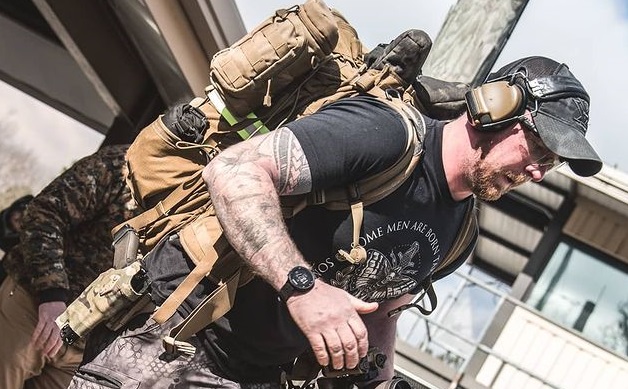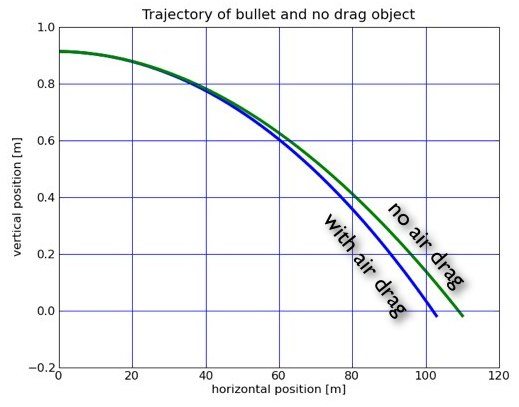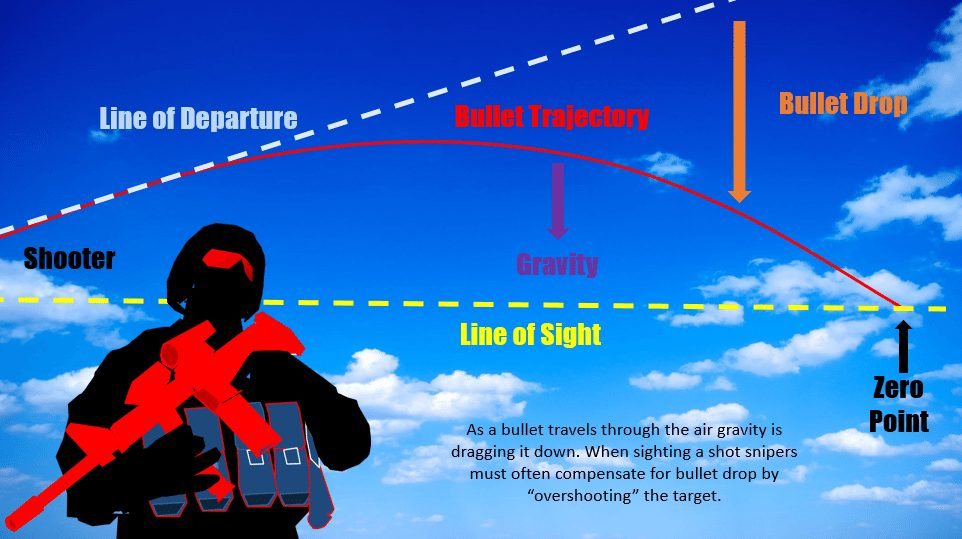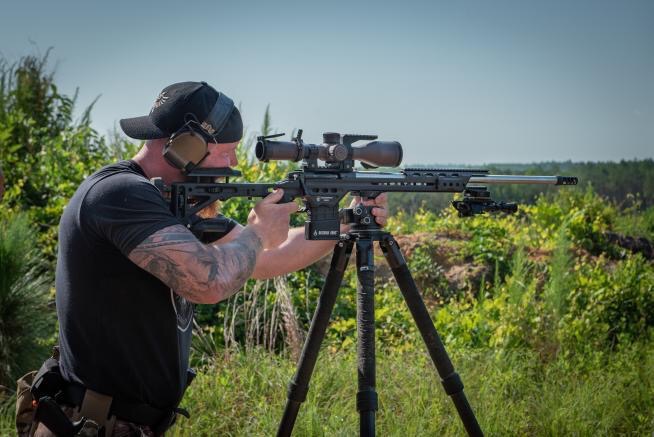The objective of this training is to present the fundamental concepts that wind and weather have on accurate shooting and how to compensate for these effects while shooting in order to attain a high percentage of first round hits.
Understand the concept of air resistance and its effects on the bullet while in flight.
- Air resistance is the cause and effect of any bullet as it travels from the muzzle to the target. Air resistance will also determine the correction for windage needed to hit the target when shooting in a wind of any strength. It will also determine the elevation needed to hit the target due to temperature and humidity changes. Air resistance can be broken down into two general areas: the effect on trajectory of the bullet and the effect on the bullet itself.
- Air resistance on the trajectory of the bullet is not easily visualized. It can be stated with great accuracy though, that air resistance determines the shape of the trajectory.
- In a vacuum, the shape of the trajectory of a bullet would be determined by the initial velocity of the bullet. Absence of air would allow the bullet to attain its maximum range when the muzzle of the weapon is elevated to the angle of 45 degrees. This is the same effect attained by a mortar. As the very low initial velocity of the projectile overcomes the most, if not all, of the effects of air resistance during its flight.
- In the air is where the effects of air resistance are seen. The velocity of the round determines the effect it will have on the path of the bullet on the way to the target. The higher the initial velocity the more effect air resistance has on the bullet. The bullet is in a constant state of deceleration from the time it leaves the muzzle and this causes the trajectory to steepen as it nears the target.
- A bullet never flies straight to a target. From the moment it leaves the muzzle of the weapon until it strikes the target it is constantly slowing and falling on the path to the target. The slowing is from air resistance and the falling is due to gravity. Gravity is a constant and has no effect on the trajectory. Air resistance is not however, and is very much a part of the trajectory or path of the bullet. The steepening of the curve is again the result of air resistance. When the bullet leaves the muzzle of the weapon it literally hits a wall of resistance and with slower rounds the resistance is less and with faster rounds it is much greater!
M118 match ammo for instance hits around 45 times the force of gravity and with the 5.56 round it is 136 times the force of gravity.
The higher the initial velocity of the round the greater the force it hits the air with. The greater the force it hits the air with the greater the force of deceleration of the bullet. For this reason the wind has more effect on the round, and the less killing energy the bullet has at the target.
- Periods of flight. A trajectory can be broken down into three periods of flight. The initial unstable period when it leaves the muzzle of the weapon, a stable period when in flight and a period of “yaw” that occurs at long very ranges.
I will continue with the effects in the next segment of the effects of wind and weather on the strike of the round.
If you like this article please LIKE and SHARE!
Jon Wilson

He was on a machine gun crew for a short time and through the push of a trooper and a 1SG (First Sergeant) was able to attend the U.S. Army Special Forces Sniper School and the U.S. Marine Corps Sniper Course. Jon graduated in the top part of his class and went on to instruct at the XVIII Airborne Corps AMTU sniper school for six months and then the NCOIC for the last year of his enlistment.
Jon deployed to Grenada in 1983 and was part of a sniper team for his battalion. Jon has always been serious about his craft and believes it is a masterful trade and that not all people can do it. He completed his SERE training at Ft. Bragg and Winter Training at Ft. Lewis, Washington. Jon would like to let readers know that his life is committed to his LORD and SAVIOUR JESUS CHRIST.
Jon Wilson subscribes to the Spotter Up way of life. “I will either find a way or I will make one”.




